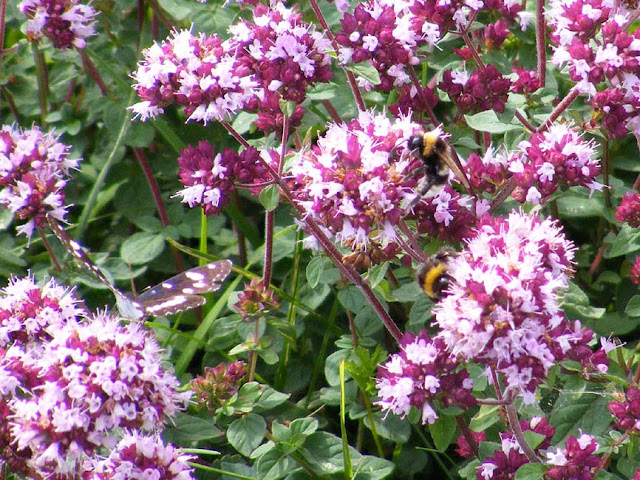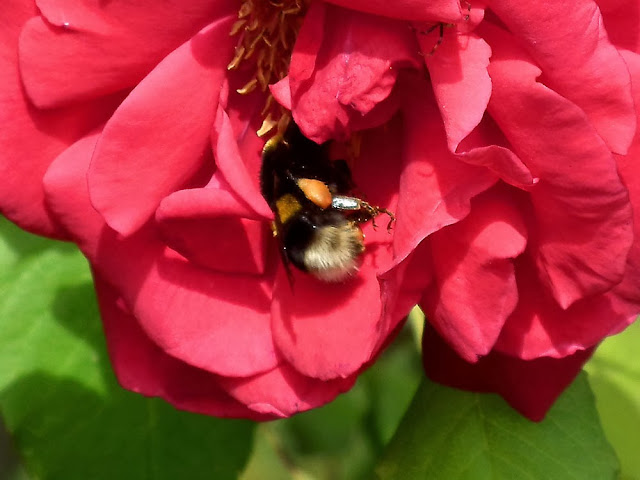It is very often not possible to distinguish these two species in the field, so they are dealt with together here.
Scientific Name: Bombus terrestris / lucorum.
English Name: Buff / White Tailed Bumblebee.
French Name: Le Bourdon terrestre / des bois or des saussaies (='ground buzzer', 'wood buzzer' or 'sallow/willow buzzer').
 5 Key Characters:
5 Key Characters:
- a yellow 'collar' band on the front of the thorax and near the front of the abdomen. (B. lucorum males can have a yellow fringe on the scutellum.)
- white 'tail' (buff or with a buff band in B. terrestris queens).
- face black (yellow in B. lucorum males).
- large, long abdomened bumblebees.
- the earliest emerging bumblebees in the area (February), and can be seen occasionally through the winter.
Lookalikes: The two species are notoriously difficult to separate. The yellow hairs tend to be more tawny, darker or golden in
B. terrestris and a brighter lemon yellow in
B. lucorum. Workers are impossible to separate in the field or from photographs, males may be separated by the presence or absence of yellow on the face, queens by the presence or absence of buff on the tail.
B. terrestris queens tend to be slightly larger. To complicate matters further, B. lucorum is actually a species complex of 3 species -
B. lucorum,
B. magnus and
B. cryptarum. Other bumblebees with a white tail and two yellow bands are
B. soroeensis (the abdominal band is interrupted), and the cuckoo bumblebees
B. vestalis ( strong yellow flashes at the top of the white tail),
B. bohemicus ( pale yellow collar), and
B. sylvestris (tip of abdomen sometimes reddish). None of these lookalike species are anywhere near as common and ubiquitous as
B. terrestris or
B. lucorum. Do not confuse with another common and ubiquitous species, the Garden Bumblebee
B. hortorum, which has an additional yellow band at the back of the thorax which runs into the band on the abdomen. Pale form males can be mistaken for
B. jonellus, which do not have a black band at the base of the abdomen dividing the yellow on the scutellum and the yellow on the abdomen.
Habitat: Many habitats, including gardens.
Flight Period: February-March-April-May-June-July-August-September-October.
Status: Common and widespread.
Photographed by Loire Valley Nature:
Photographs are numbered from left to right, and top to bottom. All photos will enlarge in a new window if you click on them. 1 worker foraging on Red Clover
Trifolium pratense in our orchard, May.
 5 Key Characters:
5 Key Characters: 5 Key Characters:
5 Key Characters:



























No comments:
Post a Comment